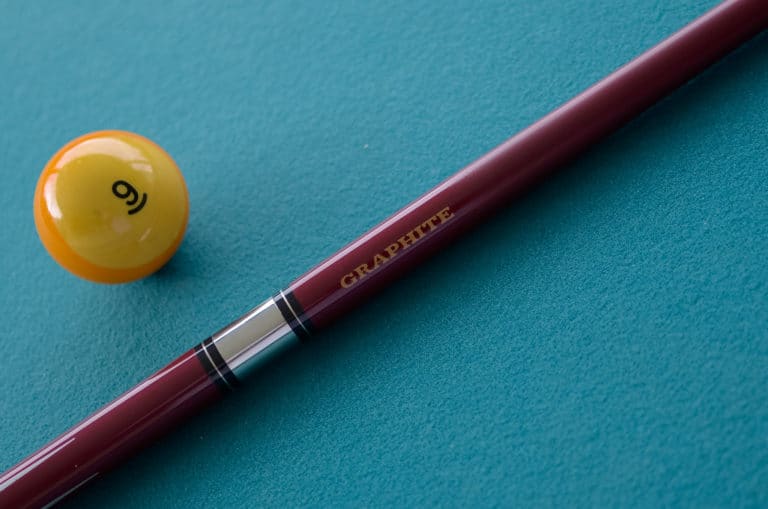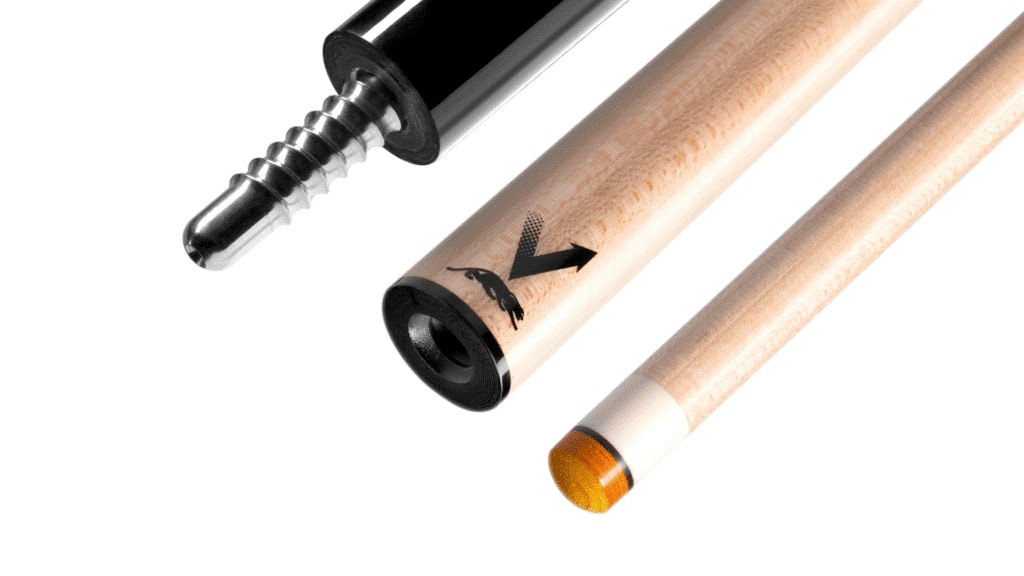Does a low-deflection pool cue shaft truly elevate your game, or is it merely a fashionable accessory in the billiards world? The truth is, the impact of low-deflection technology is often overstated, with a player's familiarity and skill ultimately trumping the perceived advantages of a technologically advanced shaft.
The quest for the perfect pool cue shaft is a journey that often leads players down a rabbit hole of technical specifications and marketing hype. The promise of reduced cue ball deflection, leading to enhanced accuracy and a more forgiving stroke, has fueled a boom in low-deflection (LD) shaft technology. But does this technology live up to its lofty claims? The answer, as with many things in the world of billiards, is complex and nuanced. While LD shafts certainly have their place and can be beneficial in certain scenarios, their impact is often less dramatic than advertised.
The basic premise behind low-deflection shafts is to minimize the sideways deviation of the cue ball when side spin (English) is applied. Traditional shafts, made from solid maple, tend to flex slightly upon impact, causing the cue ball to deflect away from the intended path. LD shafts, typically constructed with composite materials or specialized wood laminations, are designed to be stiffer, reducing this deflection. This can be particularly helpful for players who rely heavily on English, or who are struggling to consistently compensate for cue ball movement.
However, the reality of pool play is that aiming is a learned skill, and a players ability to accurately gauge and compensate for cue ball deflection is the primary factor in successful shot-making. A seasoned player, accustomed to their equipment, can often achieve greater accuracy with a standard shaft than a novice with the most advanced LD technology. The ability to "feel" the shot, to instinctively understand how the cue ball will react to different types of spin and impact, is far more critical than any technological advantage.
Many of the top professional players continue to use traditional wood shafts. In the realm of high-stakes competition, where every fraction of an inch counts, these players have refined their aiming and stroke to a point where the subtle benefits of an LD shaft are not significant enough to warrant a switch. This is not to say that LD shafts are entirely useless, but it does suggest that the focus should be on the player's fundamental skills, not the equipment.
The market is flooded with low-deflection shafts, each vying for attention with claims of superior performance and groundbreaking technology. One prominent example is the Poison Venom shaft, engineered by Predator and marketed as the best low deflection shaft for the money. The shaft boasts a "double density" (DD) technology, and claims its design allows the cue to get out of the cue ball's way, reducing deflection and improving accuracy. The marketing language emphasizes that the "result is that your cue gets out of the cue ball's way, which reduces cue ball deflection and improves accuracy".
Another popular option is the Players Pure X HXT line, recognized for its quality and value. This line features HXT low-deflection technology, including a Kamui Black soft layered tip for grip and spin, paired with a shaft designed to reduce cue ball deflection. The Katana KATXS2 offers a slim profile with a small tip diameter, promoting low deflection through its 10-piece radial construction.
Predator, a prominent name in the pool cue industry, offers the 314 shafts which have evolved through multiple generations. The latest iterations, with even further reduced deflection than their predecessors, have gained widespread acclaim. Predator's Z shafts are also noted for having deflection characteristics close to those of more expensive models, with a thinner profile.
The use of carbon fiber in pool cue shafts has also gained popularity. These shafts often feature a customized foam core to further reduce deflection and offer consistency and accuracy, catering to professional players. These often boast attributes such as being 58 inches in length and incorporating a 12.5mm rainbow cue tip with an XTC white ferrule.
The UK Open, a prestigious tournament, revealed a surprising trend: several of the top players were using wood shafts, underscoring the fact that success in pool is not solely determined by the equipment, but by the skill of the player. The emphasis should always be on practice, consistent stroke, and adapting to the nuances of one's own cue.
Some manufacturers have attempted to capitalize on the low-deflection trend by making cosmetic changes to their existing shafts, such as changing the ferrule, and claiming low deflection without significant internal modifications. Therefore, it's important for consumers to be well informed and avoid "bullshit" marketing tactics.
Ultimately, the decision of whether to invest in a low-deflection shaft is a personal one. For some players, the perceived benefits may be worth the investment. For others, the existing shaft will provide sufficient performance. Consider the players experience, the type of shots favored, and the overall approach to the game.
Players should also bear in mind the common refrain in the billiards community: use what you practice with. Switching cues frequently can disrupt aim and hinder progress. An LD shaft can be beneficial even if you don't use english unintentionally, but LD shafts also have disadvantages for different people depending on their history, bridge length, stroke, and methods they use for adjusting their aim when applying. When selecting equipment, the player's comfort and consistency should always take precedence. The goal is to find the equipment that complements the player's style and enhances their natural talent, not the most technologically advanced option available.
The key to improving one's pool game is not to constantly change equipment in search of a quick fix. Instead, it's to focus on consistent practice, refining fundamental skills, and developing a deep understanding of the game. The right equipment can certainly help, but it is the player's dedication and skill that ultimately determines success.
Consider the following table of shaft specifications for clarity:
| Shaft Type | Key Features | Materials | Deflection Characteristics | Target Audience |
|---|---|---|---|---|
| Wood Shafts | Traditional feel, familiar to many players. | Maple | Higher deflection | Players who prefer a classic feel, skilled players accustomed to compensating for deflection. |
| Low Deflection (LD) Shafts | Reduced cue ball deflection, increased accuracy with English. | Composite materials, laminated wood | Lower deflection | Players who rely on English, those seeking to improve accuracy, and newer players. |
| Carbon Fiber Shafts | High stiffness, consistent performance, often low deflection. | Carbon fiber | Very low deflection | Players seeking consistent performance, those who are willing to pay more. |
A more technical overview is available at Colorado State University


